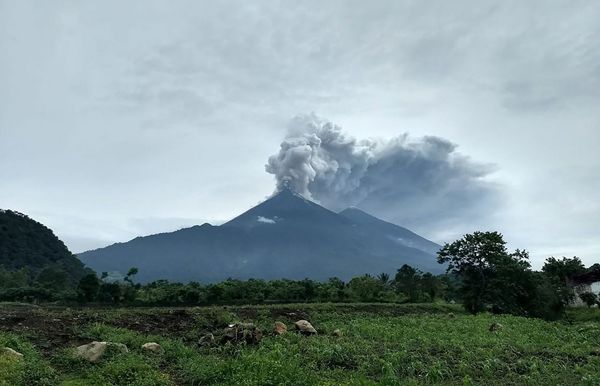Introduction to the History of Coffee cultivation in Guatemala _ inventions in Guatemala that changed the Coffee Industry
Professional coffee knowledge exchange more coffee bean information please follow the coffee workshop (Wechat official account cafe_style)
Guatemala is located in Central America. This is a country with tropical rain forest weather, high humidity and warm climate all year round. It forms the Central American volcanic arc with Nicaragua, El Salvador, Honduras, Costa Rica and Panama. Guatemala therefore has a historical background of natural disasters and fertile soil for commercial agriculture.
Coffee arrived in the United States through the Caribbean Islands between 1720 and 1730 and is the story of the famous French army captain Mathieu de Clieu. After that, the Jesuit team spread coffee to other countries. During this period, Guatemala and the surrounding land belonged to the same Spanish territory. The earliest plantations were planted around 1770. At that time, other crops used as sources of pigment were at the core of the colonial economy.
A period of natural earthquakes and social unrest
Although it appears to be dormant, nearby volcanoes can still be potentially dangerous. By 1773, Santiago de Los Caballeros, the capital of Guatemala, was destroyed by an earthquake, which naturally had a negative impact on economic and commercial and political continuity. After stopping the coffee trade chain, it will take decades to recover. Violent tremors are not limited to nature.
During the independence movement, coffee production remained low, except that the locust plague destroyed the main crop "anil" (pigment). When Guatemala finally achieved autonomy in 1821, the new government was witnessing Costa Rica's economic growth. As a result, the new government has developed a political strategy to promote coffee cultivation. In 1850, the pigment crop was abandoned by coffee, and in 1859, it became the first export. In addition, large "Haciendas" (a large plantation with housing) appeared all over the country. From this point of view, yields have increased at an appropriate rate over the years, attracting immigrants from Europe, especially Germans and French, whose inland communities are provided by the government (from local population plantations where coffee is required by law to work until 1934). Over the next few years, Guatemala increased its participation in the American coffee market, although the entire plantation was covered with ash despite the eruption of the SantaMarauda volcano in 1902.

Because of the profits from coffee, the country invests in highways and roads, connecting rural areas to important ports and other ports. Guatemala was also the birthplace of a series of inventions that changed the coffee industry at that time.
In 1876, Navy engineer Julio Smout invented a method of removing pulp from beans by mechanical plates. Then, in 1880, he invented a device to remove the shell from the shell bean. Until 1901, when the new machine was invented, the design was not changed. At about the same time, other Guatemalans such as Pablo Evelman in 1879 and Jos é Guardiola in 1880 invented the rotary cylinder and the Guardiola dryer, respectively; their inventions are the basis of existing machines for harvesting and processing coffee beans around the world.
In addition, there is another invention around the coffee industry: instant coffee. One day, Dr. Federico Lehnhoff found a cup of coffee he had forgotten in the garden and noticed that part of the solution was deposited at the bottom of the cup. Then he brewed the cup of coffee again and tasted it, and found that the taste had not changed. This is the story of instant coffee created by Dr. Federico Lehnhoff in 1913. Since then, the recipes and methods have not changed.
Coffee production and social situation are unstable
We can imagine that World War I and World War II and the Great Depression had a similar impact on the economy of the coffee industry. In addition to suspending normal supply chains to Europe, international prices have also fallen. Guatemala, which is highly dependent on coffee exports, is more affected than countries that produce non-agricultural products. For example, when Venezuela began drilling for oil, it led to changes in the Guatemalan economy to meet new needs. However, Guatemala has to wait for coffee prices to recover.
After the end of the second World War, although the success rate was very low, international institutions and organizations established or even signed some agreements to regulate coffee prices. Guatemala founded ANACAFE, an association similar to CENICAFE in Colombia, in 1959, hoping to represent coffee growers, register production and invest in research and development of new coffee varieties. When Broca (coffee borer beetle) was reported in 1971 and Roya (rust leaf disease) was reported in 1976, ANACAFE led efforts to combat them and prevent higher spread to the region through educational activities in rural areas.
Central America has been a witness to many conflicts that have scarred societies. Between 1960 and 1996, paramilitary organizations and criminal groups carefully planned violence because of drug and political motives. This led to several historic massacres. Despite a series of peace agreements and the cessation of the activities of violent groups, old resentments and disputes remain positive. But the level of violence has been alleviated.
Today's Guatemalan coffee
According to altitude, there are three main areas of coffee production in Guatemala, which affects the quality and flavor of each cup. The first is a low band (760m-1070 m), with high growth rate, low acidity and soft taste. The second is the middle area (1070-1200 m), with average acidity and taste. Finally, there is the height area (1300-2000 meters), with high acidity and rich flavor.
Despite the country's income, the national consumption rate is still very low. Therefore, the best way is to export coffee beans. Many "Haciendas" deal directly with international partners and sell them coffee.
Over the years, natural rainforests have been reduced by the development of cities, livestock and coffee. In fact, coffee plantations are considered to be the main artificial oasis in Central America, where forests full of coffee plants and shade trees are sources of oxygen. There are huge potential risks due to climate change; remaining animals and migratory birds use the plantation as a substitute for the former rainforest, but new germs can attack the plantation in a short period of time and destroy this last oasis.
Therefore, we must always remind ourselves that the impact of our actions on the environment is not untouchable.
END
Important Notice :
前街咖啡 FrontStreet Coffee has moved to new addredd:
FrontStreet Coffee Address: 315,Donghua East Road,GuangZhou
Tel:020 38364473
- Prev

A small blueberry manor that has shown great strength in the competition in the New Oriental region of Guatemala in recent years.
Professional coffee knowledge exchange more coffee bean information please pay attention to the coffee workshop (Wechat official account cafe_style) Guatemala is located in Central America, where the geographical environment is unique between North and North America, and South America borders with the Caribbean Sea and the Gulf of Mexico, so the hot and humid climate has always been an important coffee producing area in the world. The New Oriental producing area is in danger.
- Next

Jadeite Manor Panamanian Poket Emerald Rose Summer Coffee Geisha / Geisha
Professional coffee knowledge exchange more coffee bean information please follow the coffee workshop (Wechat official account cafe_style) Emerald Manor first generation owner Rudolph A. Peterson 1964 Swedish-American financier Rudolph. Peterson retired, moved to Panama and bought the emerald estate of Bouquete. Rudolph bought Hacienda La Esmeralda only for
Related
- Does Rose Summer choose Blue, Green or Red? Detailed explanation of Rose Summer Coffee plots and Classification in Panamanian Jade Manor
- What is the difference between the origin, producing area, processing plant, cooperative and manor of coffee beans?
- How fine does the espresso powder fit? how to grind the espresso?
- Sca coffee roasting degree color card coffee roasting degree 8 roasting color values what do you mean?
- The practice of lattes: how to make lattes at home
- Introduction to Indonesian Fine Coffee beans-- Java Coffee producing area of Indonesian Arabica Coffee
- How much will the flavor of light and medium roasted rose summer be expressed? What baking level is rose summer suitable for?
- Introduction to the characteristics of washing, sun-drying or wet-planing coffee commonly used in Mantenin, Indonesia
- Price characteristics of Arabica Coffee Bean Starbucks introduction to Manning Coffee Bean Taste producing area Variety Manor
- What is the authentic Yega flavor? What are the flavor characteristics of the really excellent Yejasuffi coffee beans?

